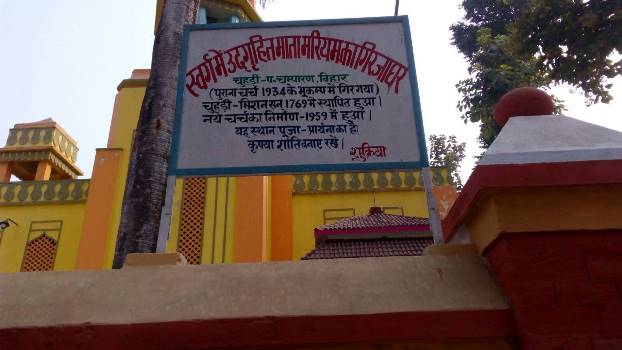A community of Newar Christians living in Bihar

By Shaurya Kshatri
Kathmandu, Dec. 26: Banished over 250 years ago from their home country, the descendants of the Newar Christians of Nepal at Chuhari in North Bihar, still add the local touch of their ancestors to their celebrations.
In the Spring of 1628, the then king Lakshmi Narasimha Malla is famously said to have presented a tamra patra, a copper plate, to a Portuguese Jesuit father Juan Cabral as a symbol of acceptance allowing him to preach Christianity. Author Cindy L Perry, recounts this episode in her book Nepali Around the World: Emphasising Nepali Christians of the Himalayas, thereby calling the moment as the beginning of Christianity in Nepal.
She also tells of Capuchin fathers from Rome who took the first attempt at a more permanent presence in Nepal after they set up a mission station in Kathmandu in 1715 and lived amongst the people of Bhaktapur and Patan in the Kathmandu Valley for over 54 years.
After Prithvi Narayan Shah's conquest in 1769, the Capuchin fathers and over 60 newly converted Newar Christians were not allowed to stay in Nepal by the Shah kings.
English soldiers had attacked Sindhuligadhi and it is believed that the king had suspected the Capuchin Christians to be a part of the scheme. In February of 1769, they left the Valley and found their way to Bettiah, India, where until this day the descendants of the banished Newar Christians still reside in a small village called Chuhari.
One of the Newar Christian descendants is Amar Singh, who during a conversation via Facebook with The Rising Nepal revealed a little about his family history.
“I was born in Chuhari to Dennis Lawrence, and like my father, I am also a descendant of the first Newar Christians who fled Nepal to build their community here in Chuhari,” said Singh. Singh lives with his wife and daughter at Chuhari where on every Christmas Day, he attends a mass from his daughter’s school at Khrist Raja High School, the oldest school in Bettiah.
Likewise, Johnny Gregory is another resident of Chuhari who identifies himself as a Newar Christian. In fact, Gregory has also included the word Newar at the end of his name to reveal his identity. “Although I don’t speak Newari, I am a devout Christian and respect my lineage,” states Johnny, who is a member of the Church called Our Lady of Assumption, Chuhari.
The church is said to have started back in 1769. According to the historic establishment, the history of Catholicism in Chuhari is linked with Catholicism in Nepal.
“After the unification of Nepal by Prithvi Narayan Shah, the Christian priests were asked to leave for fear they were British spies. In 1769, the priests and many Nepalese Christians left for India and settled in Chuhari,” as per the Church’s Facebook bio.
To track this lost diaspora of Newar Christians, in December of 2012, Naresh Duwal, a resident of Khokana and an active Protestant Christian, ventured on a journey to find them.
“I found that they resembled the Biharis more. To identify themselves, the Newars in the Chuhari village are called ‘Bhaju’ and every Newar puts the word after their name,” says Duwal remembering his encounter. Duwal was gratified to find how some of them spoke Newari fluently and held on to their age-old traditions. “The women there wore nose-studs, which local women in Kathmandu don’t wear anymore.”
Rooted in Nepali culture, even when their forefathers were banished from their own country more than 250 years ago, they add a touch of Nepalipann to their Christmas celebrations. During Christmas, they sing carols in Nepal Bhasha and many today wear traditional clothes like Hakku Patase while caroling.
Recent News

Do not make expressions casting dout on election: EC
14 Apr, 2022
CM Bhatta says may New Year 2079 BS inspire positive thinking
14 Apr, 2022
Three new cases, 44 recoveries in 24 hours
14 Apr, 2022
689 climbers of 84 teams so far acquire permits for climbing various peaks this spring season
14 Apr, 2022
How the rising cost of living crisis is impacting Nepal
14 Apr, 2022
US military confirms an interstellar meteor collided with Earth
14 Apr, 2022
Valneva Covid vaccine approved for use in UK
14 Apr, 2022
Chair Prachanda highlights need of unity among Maoist, Communist forces
14 Apr, 2022
Ranbir Kapoor and Alia Bhatt: Bollywood toasts star couple on wedding
14 Apr, 2022
President Bhandari confers decorations (Photo Feature)
14 Apr, 2022










